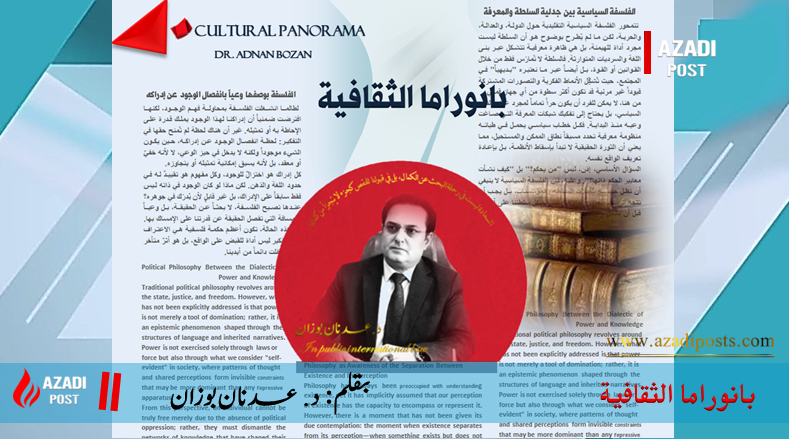
By Dr. Adnan Bozan
Amid the fervor of nationalism and the flood of collective emotions on social media platforms, many nations slip into the perilous game of symbols—trying to interpret, claim, or monopolize them as if history and emblems were malleable clay to be molded according to current desires. The case of the “eagle”—which has suddenly become the center of political and nationalist controversy—is a striking example of the deep cultural and identity crisis afflicting certain Arab regimes, especially when they attempt to resurrect historical symbols that were never part of their heritage, but rather belong to a different cultural and historical context: specifically, the Kurdish Ayyubid legacy represented by Salah ad-Din al-Ayyubi.
According to history books—not Facebook posts—the eagle was never an Arab symbol. It was never featured in the banners or insignias of ancient Arab tribes or dynasties. Neither the Umayyads, nor the Abbasids, nor the Fatimids, nor even the Ottoman Empire in its Islamizing phases, adopted the eagle as a national emblem. The eagle—unambiguously—was a symbol employed by the Kurdish commander Salah ad-Din al-Ayyubi, founder of the Ayyubid dynasty, who led Muslim armies to liberate Jerusalem, not in the name of Arabism, but in the name of Islam, with a clearly Kurdish national identity that he never concealed—rather, it was evident in both his military structure and administrative hierarchy.
Salah ad-Din’s banner was yellow, with a proud eagle at its center—evoking the solar deities of ancient Eastern religions, particularly the Yazdani traditions carried by the Kurdish people in their ancient spiritual customs, where the sun is worshipped as a manifestation of divine light, of creative power, and as a symbol of justice. That yellow color was no arbitrary choice, and the eagle was not a decorative motif—it was, in Eastern traditions, the guardian of mountains, a symbol of sovereignty, strength, elevation, and far-sighted vision. It was placed atop the fortresses of the Ayyubid state as a testament to its power and continuity—not as a token of any singular nationalist ideology.
What we are witnessing today, however, is a symbolic act of appropriation. The attempt to “Arabize” the eagle and integrate it into the pantheon of Arab national symbols constitutes a blatant violation of historical memory and cultural specificity. It’s not that Arabs are forbidden from using the eagle as a symbol—but rather, the deliberate erasure of its origins and the fabrication of a reversed mythology that makes it problematic. Modern digital tools are now used to design emblems and give them the illusion of deep historical roots in the Arab nation, but technology cannot manufacture truth, and Photoshop cannot grant historical legitimacy. If every design could become a heritage, memory would lose its meaning, and digital artists would replace Ibn Khaldun as our historians.
What is even more dangerous is the transformation of identity into a marketplace—where anything that can be seized from other peoples is repackaged to give the illusion of a reborn “glory.” But in truth, such glory—if it ever existed—cannot be resurrected this way. True glory cannot be forged, invented, or stolen from others. And unless a nation has authentic roots in its symbols, it will remain in a constant state of imitation—walking in the shadow of others, fighting over scraps of symbolism as empires fight over crumbs of geography.
Those seeking to use this emblem would have done better to acknowledge its origin, to respect its historical context, and to take pride in the fact that a non-Arab—of Kurdish origin—raised that banner, led Muslims to victory, and proved that there is no contradiction between ethnic identity and Islamic leadership. The issue here is not only historical ignorance, but a psychological urge to invent an alternative past—merely to conceal present-day failure, dressing up the symbolic stage with a counterfeit coat of nostalgia.
Nations that deny others their symbols—or attempt to erase and rebrand them—are, in truth, declaring symbolic bankruptcy. Just as regimes reveal their failure when they cling to falsified histories rather than build genuine futures. Nationalism cannot be founded on symbolic theft, but rather on mutual recognition, and on a deep respect for the collective memory of all peoples.
It is now more urgent than ever to reassess our relationship with history and its symbols—not as slogans for mass consumption, but as cultural structures worthy of preservation and respect. Just as no European has the right to claim the crescent as a Christian symbol, no Arab has the right to claim the eagle as an Arab national emblem. That eagle—born atop the Ayyubid fortresses, soaring in the skies of the Middle East with Kurdish pride—deserves to be acknowledged by its true name, not replaced with a fabricated tale.
Whoever fears to acknowledge origins, lacks confidence in their own identity. And whoever tries to reshape history to fit their ideology, is simply afraid of facing the present. Truly living nations are those who honor others before they boast of themselves.